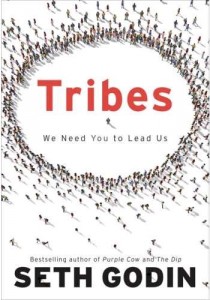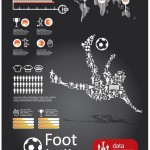 (This is a guest post by Andrew Collins)
(This is a guest post by Andrew Collins)
Listening to current marketing principles today, it can be easy to become distracted in the multitude of social media channels and forget where the real value lies. One basic principle we’ve seen promoted and often adopted is ‘crowd sourcing’ or ‘marketing to crowds’ when in fact the validity of this argument is actually very weak.
The definition of a crowd – as defined by most dictionaries is ‘a collection of people’. Now although the logic behind communicating to a large volume of people is clear, it’s simply not a clear and effective strategy when your objective is to create change (I mean real change – like the stuff that wins you big markets).
Crowds are not binded by a collective cause or led by any individual member. Crowd members simply have a common location and a common interest which brings them together. A common example of a crowd in sports can be found at arenas where you’ll find families, teenagers, professionals and more all cheering for the same team. You shouldn’t assume that they should all listen to the same message or that they regularly communicate with each other.
A very close friend of the ‘crowd’ is the ‘tribe’. The word ‘tribe’ immediately invokes a sense of pride, commitment and influence. A tribe has a leader. It has a common cause and a sense of purpose. Tribes are also very big, just like crowds. The real challenge as a marketer is figuring out how we can align our objectives with a tribe to create a connection.
Sports organizations often invest in new markets such as the Australian Football League with the expansion in Greater Western Sydney, Major League Baseball expanding into China and the NFL are committing to reaching the Latina market in the United States. Each league has a commitment to connect their sport with a populous market. Those markets have existing (and successful) alternative sporting codes already in adoption; most likely with good history. So it’s not a matter of offering a product to sell as much as it is about creating a movement for long term adoption and change.
A clear communication message is critical to winning acceptance. USA Senator Bill Bradley defines a movement as having the following basic elements:
- A story that tells what you represent and the future you are trying to build
- A connection between the leader and the tribe (community)
- The movement requires empowerment of the tribe to participate with few limitations
Crowds can become tribes, and tribes can become connected to your movement. To ensure you are well equipped to support such a movement you at a minimum must have the following in play:
- A shared interest – with your organization and the tribe
- A effective way for members to communicate such as community websites.
 I am a big fan of Seth Godin who preaches that your organization can increase the effectiveness of the tribe and its members by three steps:
I am a big fan of Seth Godin who preaches that your organization can increase the effectiveness of the tribe and its members by three steps:
- Transforming the shared interest into a passionate goal and desire for change
- Providing tools to allow members to tighten their communications
- Leveraging the tribe to allow it to grow and gain new members.
Typically organizations only focus on the third outcome which may bring short lived success, but remains distant from creating any real change.
How much of your communication strategy is winning over tribes in your key markets?
###
 Andrew Collins is the CEO and Founder of the Mailman Group. The Mailman Group specializes in connecting sports organizations with a global Chinese audience.
Andrew Collins is the CEO and Founder of the Mailman Group. The Mailman Group specializes in connecting sports organizations with a global Chinese audience.



